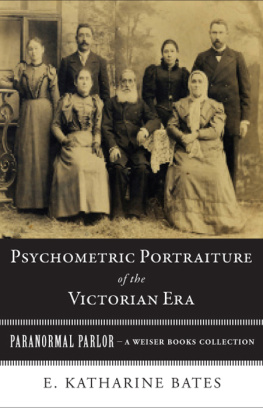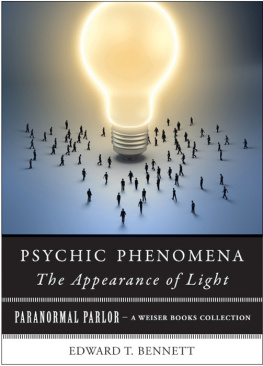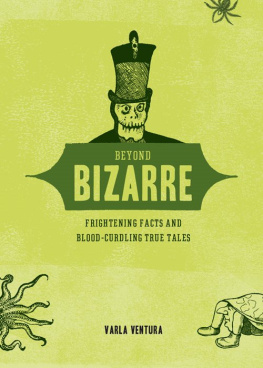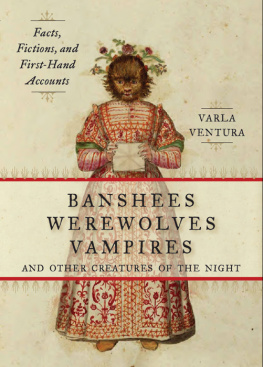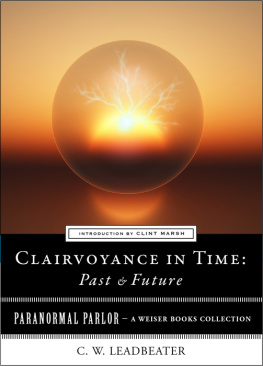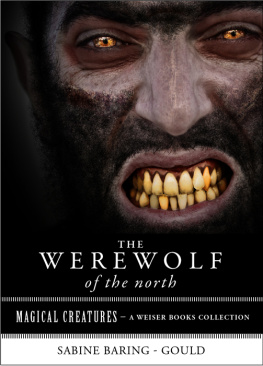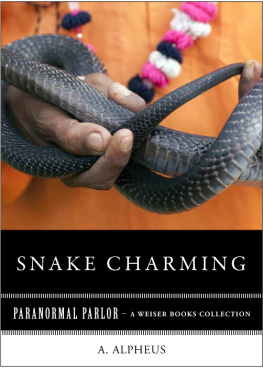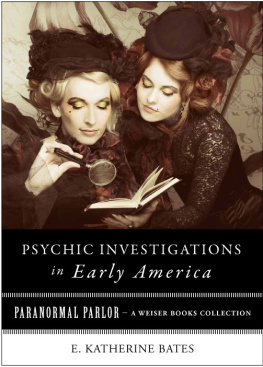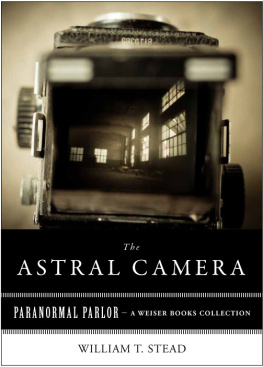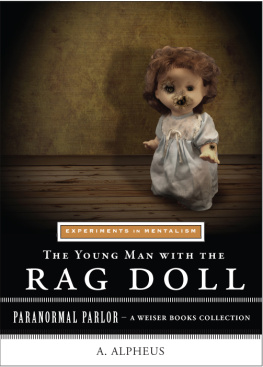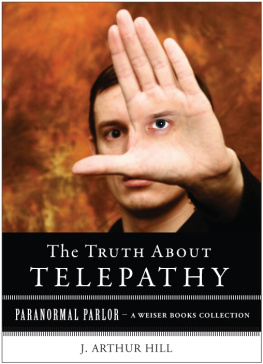This ebook edition first published in 2011 by Red Wheel/Weiser, LLC.
With offices at:
665 Third Street, Suite 400
San Francisco, CA 94107
www.redwheelweiser.com
Copyright 2011 by Red Wheel/Weiser LLC. All rights reserved.
Excerpted from Seen and Unseen by E. Katharine Bates. New York: Dodge Publishing, 1908.
eISBN: 978-1-61940-016-0
Cover design by Jim Warner
Cover photograph Shutterstock Kateryna Larina.
Table of Contents
Psychometric Symptoms
I have a fetish for cemeteries. I love the headstonesthe marbleized testimony to lives once lived. And there is nothing quite as soothing as the ghostly silence that seems to follow one while walking over stone pathways and trimmed lawns, reading the names of the deceased, seeking out the prominent citizens and oldest tombs.
Recently I found myself walking where a cemetery once wasLincoln Park in my fair city of San Francisco. It is home to a scenic public golf course that sports views of the Golden Gate Bridge and the cerulean waters of the bay, and it is also host to the remnants of Lincoln Park Cemetery. Because of city expansions in the 1930s, many of San Francisco's boneyards were sent south to Colmaa city with more dead residents than living. Here and there, however, traces of the former graveyards can be found. On the golf course itself the observant will notice remnants of a marble arch, a stone bench, and a granite monolith. (I won't speculate about what sleeps beneath the grassy lawns of the parkwaythe city claims they moved all the bodies with the headstones, but the horror fan in me knows there are coffins left below.)
This park is also home to the beautiful Palace of the Legion of Honor, one of the oldest art museums in San Francisco. After an hour or so wandering in the foggy air, exploring the cemetery's remains, I decided to warm up with a walk through the museum. This brought to mind Alfred Hitchcock's Vertigoa suspenseful tale set in San Francisco. Kim Novak's character Madeleine Elster/Judy Barton visits the Legion of Honor to gaze upon a particular painting that has seemingly possessed her.
I have a painting there I like to visit, too. I've a schoolgirl crush on its subjecta young Scottish hunter. His gaze is confident and frank. The first time I saw this painting, for reasons I have yet to fully understand, I blushed beneath that gaze. And now, like Madeleine/Judy, I visit the Legion regularly just to see this fellow. Oh sure, I'll go to the special exhibits that rotate throughout the year, or to see the Rodin statues in the main gallery. But not a single visit goes by without at least a quick dash to the gallery where this portrait hangs. My heartbeat quickens, my hands tremble, and I feel giddy at the anticipation of meeting this hunter again. So I've my own Vertigo-style fixation: Who was this man? Why my obsession? Was he a lover in a past life? Or perhaps I was maid to this man of high-degree.
The following tale is one of haunted paintings of a sort. The author, E. Katherine Bates, was an Englishwoman of independent means. She traveled the worldAmerica, Australia, Hong Kong, Alaska, etc.pursuing her developing interest in psychic events in the 1880s. In this particular portion of the paranormal adventure she delves into psychometry.
She writes:
In the interests of non-psychic readers, I may explain that psychometry is the science of learning to receive impressions and intuitions from the atmosphere surrounding any material objecta letter, a ring, a piece of pebble or shell, and so naturally this is especially the case in letters written and signed by us.
This psychic phenomenon is precisely what happened to Kim Novak's character in Vertigo when she looked at that painting! Could it be what happens to me, too, when I look upon the young man in that painting? It is possible. Stranger things have happened.
Read on.
In Freakitude,
Varla Ventura
San Francisco, 2011
A FAMILY PORTRAIT AND PSYCHIC PHOTOGRAPHY
In the very heart of Warwickshire there is a beautiful old half timber hall, approached by a noble avenue of elms. The hall has come down from father to son, in the direct line, for nearly six hundred years, as the dates upon the front of the house testify.
The present Squire is not only an old friend of my early youth, but is connected through marriage, and he and his wife and I have always been on very friendly terms. He is the usual type of fox-hunting squire and county magistrate, did good service during the South African War by raising a corps of Yeomanry from the estate, and going out with them to fight his country's battles, and, needless to say, he received a hearty ovation from his wife and his county when he returned to them in safety. He is devoted to his beautiful house and estate, and is the last man to entertain fancies or superstitions in connection with either.
It is necessary to give these few words of explanation before relating an incident in my life for which I have always found it difficult to account, except on the supposition that some germ of psychic sensitiveness may exist, even under a hunting squire's pink coat and top-boots.
I have known Greba Hall since I was a child, and all its quaint old family portraits, especially those in the fine oak-panelled hall, with the old-fashioned open fireplace and dogs of the fifteenth century. But there were so many of these pictures massed together that I have never distinguished one from the other, with the exception of the few immediate ancestors of my friend.
Some years ago I was staying with a lady who lived about three miles from Greba, and we had driven over there to have tea with the Squire's wife, whom I will call Mrs Lyon. The friend I have mentioned had become interested in psychic matters since my acquaintance with her, and I had discovered that she possessed some psychometric capacity.
In the interests of non-psychic readers, I may explain that psychometry is the science of learning to receive impressions and intuitions from the atmosphere surrounding any material objecta letter, a ring, a piece of pebble or shell, and so forth. We seem capable of impressing all material objects with our personality, and naturally this is especially the case in letters written and signed by us.
The lady with whom I was then stayingMrs Fitz Herberthad tried receiving impressions from letters several times, at my suggestion, and always with more or less success. We had been speaking of this with Mrs Lyon, who was always very sympathetic, and she suggested giving one of her own letters to Mrs Fitz Herbert to be psychometrised.
The latter was sitting facing a door which led from the hall to an inner room, and over this door hung the half-length portrait of an old gentleman, whom I had never specially remarked before, as the picture was hung rather high, and there was nothing very characteristic about the face.
Mrs Fitz Herbert glanced at the portrait once or twice as she held the letter, and began her remarks upon the writer; but I had no reason to suppose that the glance was other than casual and accidental.
She gave, however, a very remarkably accurate description (as it turned out) of Mrs Lyon's unknown friend, both as to his character and the special and rather unique conditions of his life.
I was feeling naturally gratified that my pupil should have acquitted herself so well, when she suddenly uttered a little expression of pain and complained of severe headache.
I knew that she suffered from these headaches at times, and was therefore not surprised by her asking leave to ring for the pony carriage at once, and we were soon on our way home.
Mrs Fitz Herbert was driving the pony, and as we turned out of the long elm avenue she murmured in a tone of relief:
Next page
